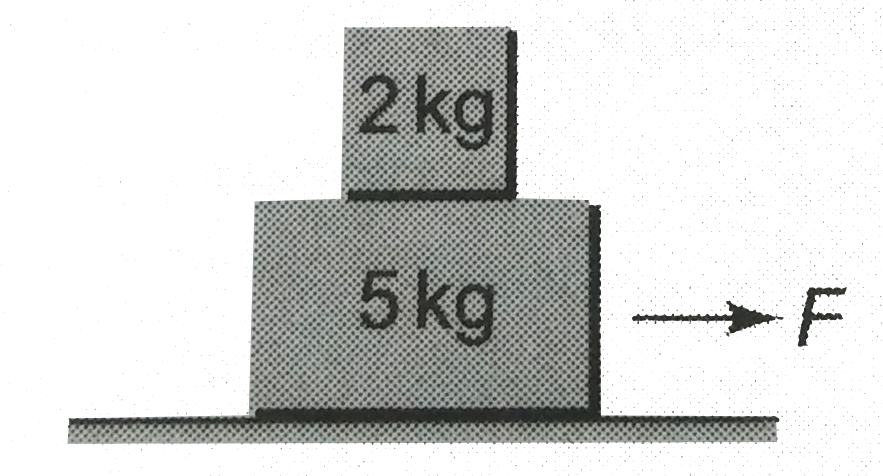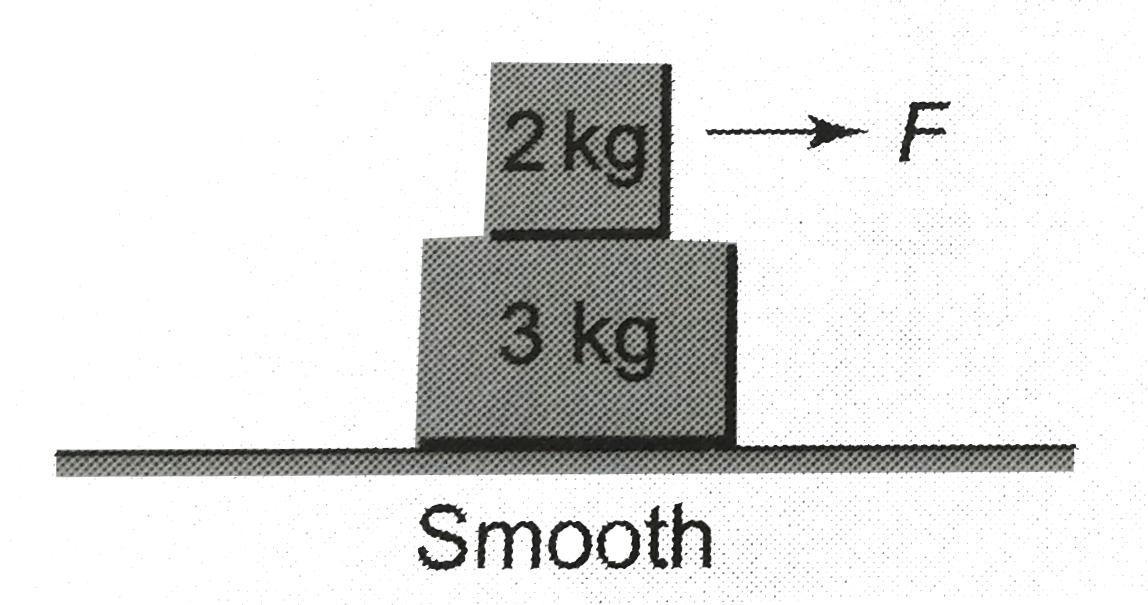Describe motion of the block if F is equal to
(a) 20N (b) 40N (c ) 60N
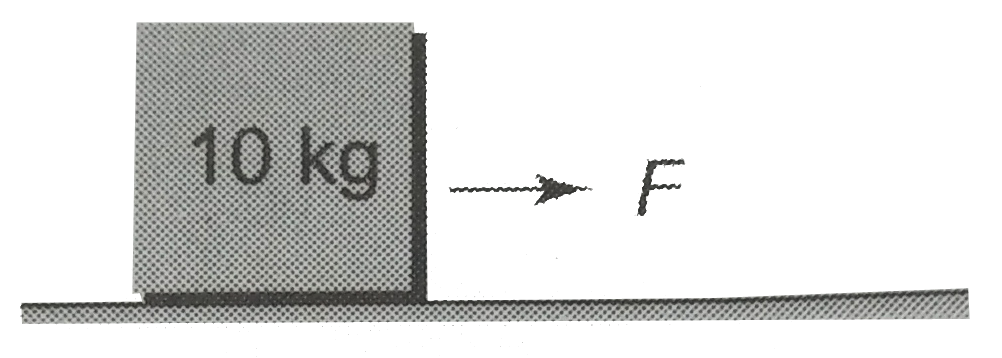
Video Solution
Text Solution
N0=100N
(fs)max=μsN=0.52×100=52N
fk=μkN=0.50×100=50N
(a) When F=20N
F<(fs)max , the block is at rest
Friction =f=fs=F=20N
(b) When F=40N
F<(fs)max , the block is at rest
Friction=f=fs=F=40N
(c ) When F=60N
F>(fs)max , the block is in motion
Friction f=fk=μkN=50N
50−50=10a
a=1m/s2
The block is moving under constant acceleration 1m/s2.
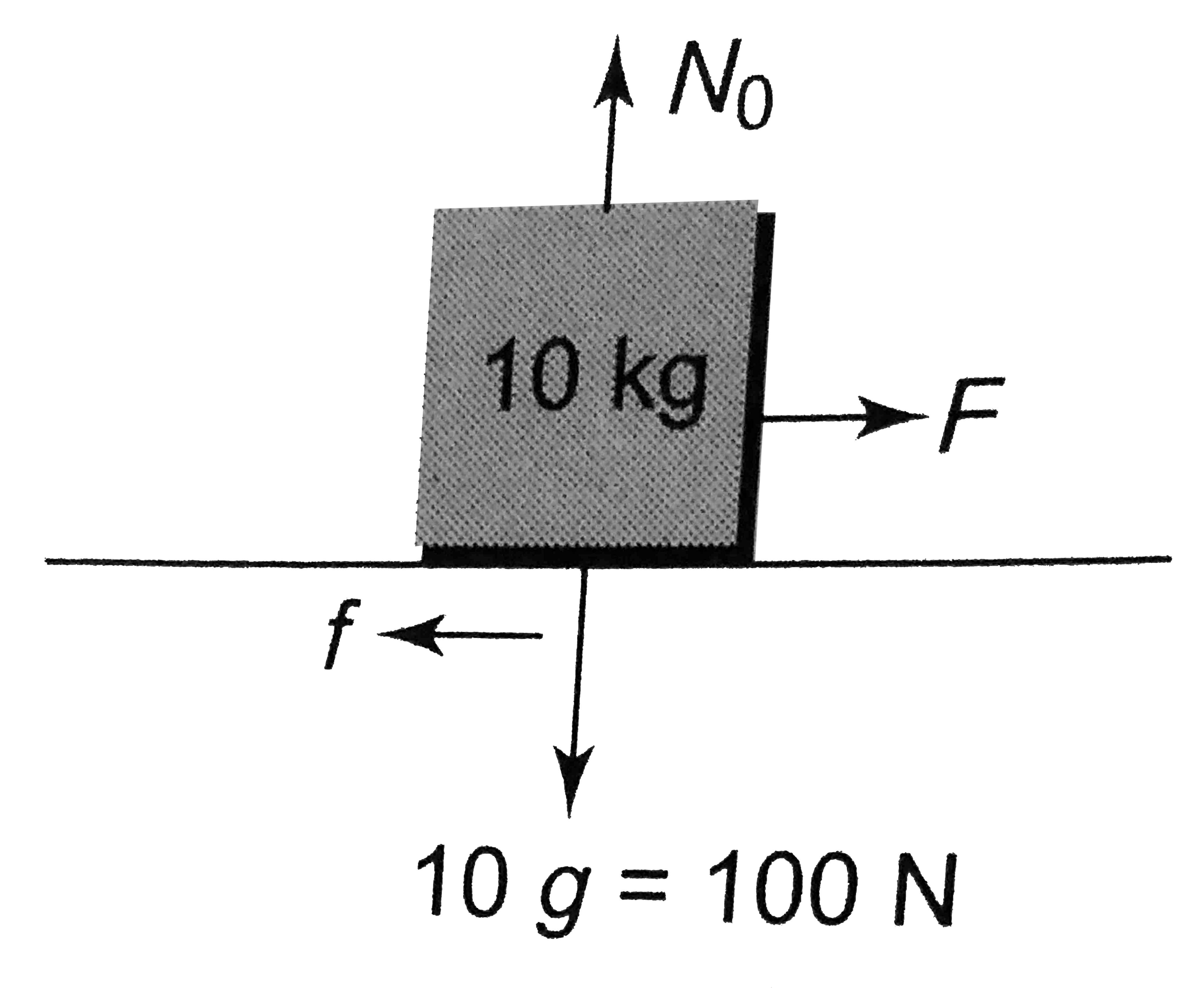
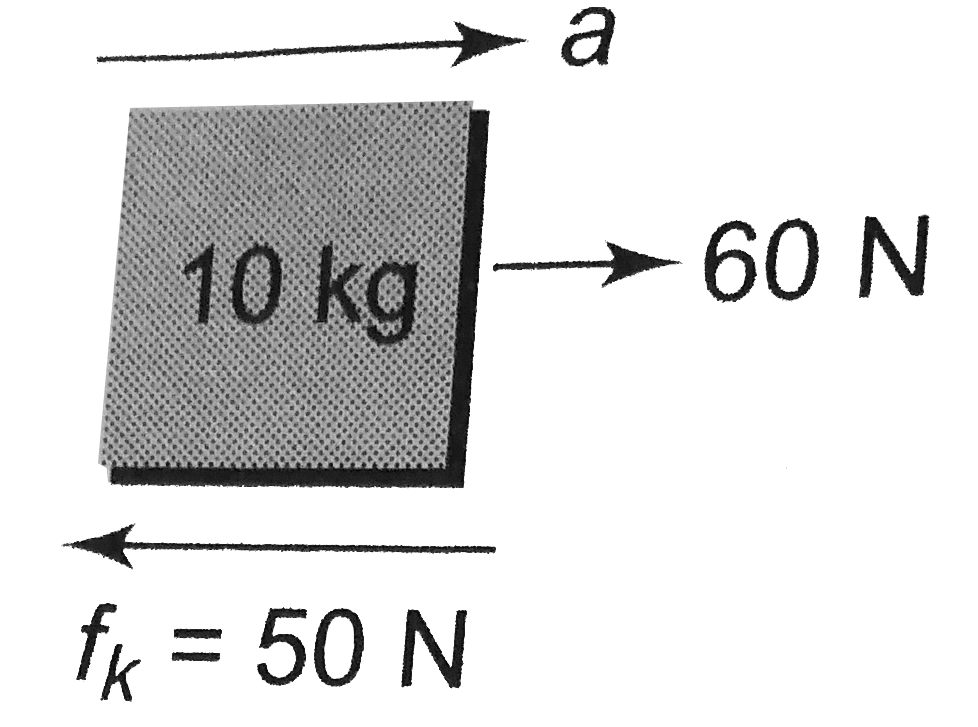
|
Topper's Solved these Questions
Similar Questions
Knowledge Check
nCn is equal to-
A0B1CnDNone of theseIn a group of 50 students ,30 like Basketball ,20 like football and 10 like neither of the games .How many like both the game ?
The following steps are involved in solving the above problem .Arrange them in sequential order.
(A) n(B∩F)=50−40=10
⇒40=50−n(B∩F)
( C ) Let n(B) = 30 ,n(F)=20 and n(B∪F)=50−10=40
We know that n(B∪F)=n(B)+n(F)−n(B∩F)ACDBABCBDACADBCDBCDAA20 kg block is initally at rest. A 75 N force is required to set the block in motion. After the motion starts, a force of 60 N is required to keep the block moving with constant speed. The coefficient of static friction is
A0.6B0.52C0.44D0.35
Find acceleration of blocks F=40N
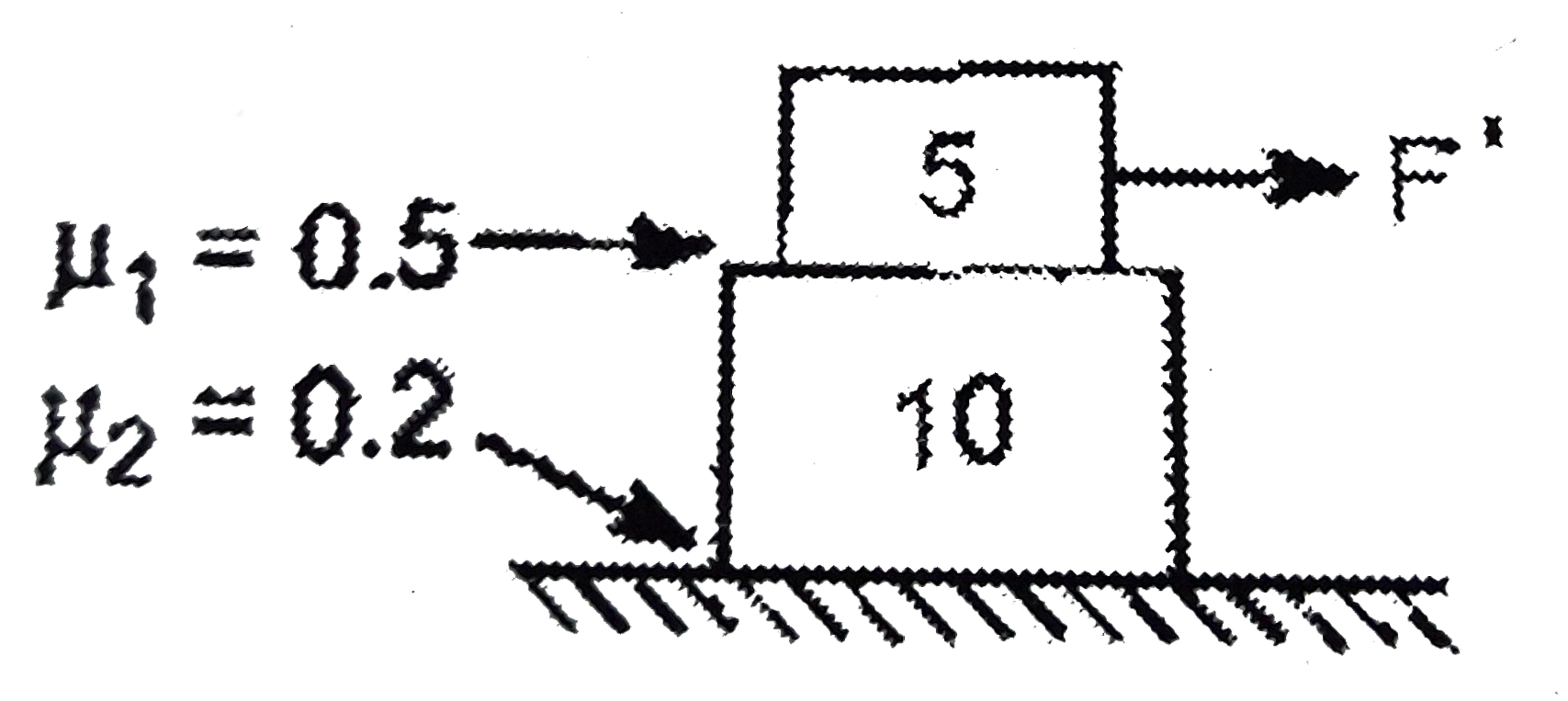
View SolutionIf A+B+C=180∘ , then tanA+tanB+tanCtanA tanB tanC is equal to tanAtanBtanC b. 0 c. 1 d. none of these
View SolutionA20 kg block is initally at rest. A 75 N force is required to set the block in motion. After the motion starts, a force of 60 N is required to keep the block moving with constant speed. The coefficient of static friction is
View SolutionA20 kg block is initally at rest. A 75 N force is required to set the block in motion. After the motion starts, a force of 60 N is required to keep the block moving with constant speed. The coefficient of static friction is
View SolutionIf the number of items of a set A be n(A) = 40, n (B) = 26 and n(A∩B)=16, Then n(A∪B) is equal to
View Solution

